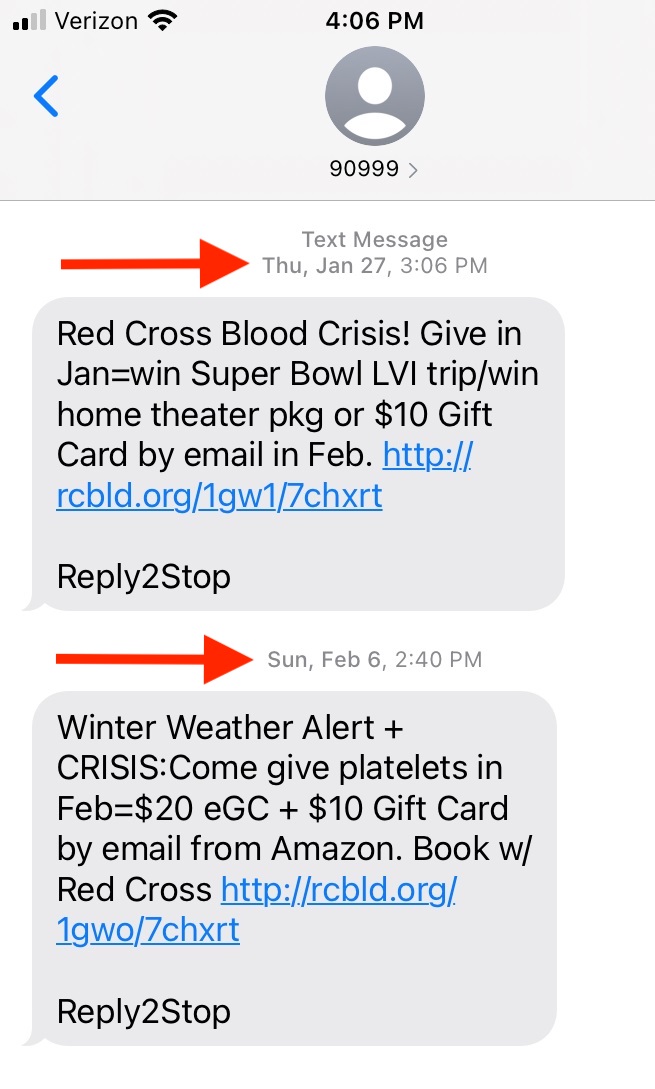SMS marketing is booming. The rise of smartphones and text messaging provided a new vehicle for companies to communicate with customers. Slowly, short message service — SMS, synonymous with text messaging — has supplemented many companies’ email marketing efforts.
In this post, I’ll review how to integrate SMS into your email program.
SMS vs. Email
Email marketing is effective because it directly connects to a customer or prospect. Nowadays, most recipients receive emails on their smartphones, making the channel even more effective.
However, email has challenges that SMS does not. First, email senders face deliverability hurdles. Senders are at the mercy of large email platforms such as Gmail, Yahoo, and others that control the filtering or blocking of messages. Recent statistics show that 99% of email users check their inboxes daily. Still, senders wait until a subscriber checks and then hope she reads the content.
SMS offers near-instant communication. Most recipients read text messages very soon after arriving. Wearable smartwatches mean text-message recipients no longer have to be near their phones. The immediacy and intimacy of SMS translate into a powerful way to connect with consumers.
Launching SMS
SMS can provide superior customer service. Examples include the hospitality industry confirming reservations and airlines updating passengers on flight status.

Airlines use SMS to update passengers on flight status. This example is from United.
The first step in implementing SMS is to confirm customers want to receive those messages. Many ecommerce brands use SMS for basic order info. Customers often prefer that method for shipping and other updates. So it’s a good idea to provide this option during checkout.

Customers often prefer shipping and other updates via text. So it’s a good idea to provide this option during checkout.
Beyond transactional info, SMS can be an effective marketing channel provided, again, customers want to receive the messages. Include SMS sign-up options throughout the site with clear frequency expectations and instructions for opting out. Providing value in exchange for a phone number can improve sign-ups.
Strategies for SMS Success
Obtain expressed permission. The U.S. Telephone Consumer Protection Act requires businesses to receive explicit consent to send text messages. The requirement is much stricter than the U.S. CAN-SPAM Act, which does not require an opt-in, only that brands honor opt-outs. While it’s not required, include opt-out instructions with every text.
Reintroduce your brand. A drawback to SMS is identifying the sender. There’s no “From:” line as with email. Recipients only see a number. Thus, it’s essential to make clear on every text message who it’s from.

Verizon identifies itself with every text message.
Frequency. Send far fewer SMS messages than emails. Start with intervals between texts of at least 10 days. As with email, testing will determine the best frequency to minimize opt-outs and drive engagement. The type of product or service impacts frequency. For example, if consumers purchase your products every six months, the SMS frequency should follow that schedule.

Red Cross’s SMS frequency is roughly every 10 days.
Messages types. Be careful with promotional messages. Don’t overdo it. A good strategy is to alternate between transactional and promotional. This will keep recipients engaged and reduce opt-outs.
Complement Email
SMS reach is finite. Far fewer consumers choose to receive text messages versus email. A text is a personal form of communication for many, reserved only for limited acquaintances. Nonetheless, done correctly, SMS complements email — increasing engagement, customer service, and conversions.





